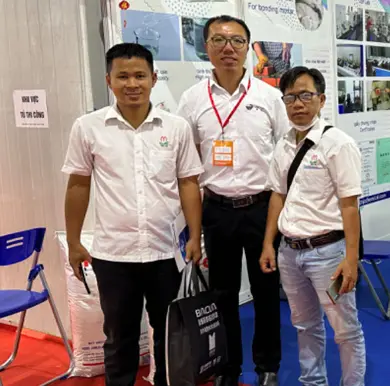
Dec . 04, 2024 15:59 Back to list
Analysis of HPMC Pricing Trends and Market Insights
Understanding HPMC Price Factors and Trends
Hydroxypropyl Methylcellulose (HPMC) is a widely used cellulose ether that finds application in various industries, including construction, pharmaceuticals, food, and cosmetics. Its versatile properties, such as water retention, thickening, and film-forming capabilities, make HPMC a desirable ingredient across these sectors. One of the important aspects to consider when working with HPMC is its pricing, which can be influenced by various factors. This article aims to explore the key factors affecting HPMC prices, current market trends, and future projections.
Factors Influencing HPMC Prices
1. Raw Material Costs The primary component of HPMC is cellulose, which is derived from wood pulp or cotton. Fluctuations in the prices of raw materials directly impact the overall cost of HPMC production. When the cost of cellulose rises due to supply chain disruptions, natural disasters, or increased demand, HPMC prices tend to follow suit.
2. Manufacturing Process HPMC production involves a complex manufacturing process that requires significant energy and technology. Variations in energy prices or changes in manufacturing technologies can affect the cost of production, thus influencing HPMC prices. For example, manufacturers that invest in more efficient technology may achieve lower production costs, allowing them to offer competitive pricing.
3. Market Demand Demand for HPMC varies widely across different industries. In the construction sector, for instance, the demand often spikes during economic booms when more buildings and infrastructures are being developed. Similarly, the pharmaceutical industry may experience fluctuations in HPMC demand based on emerging health trends and medication requirements. This dynamic demand landscape can lead to price volatility, particularly when demand outstrips supply.
4. Competition The HPMC market consists of multiple manufacturers, leading to healthy competition. Players in the market strive to differentiate their products based on quality, price, and availability. This competition can drive prices down, especially in a saturated market. However, mergers and acquisitions may lead to reduced competition, causing prices to stabilize or increase.
hpmc price

5. Global Trade Policies Trade policies, tariffs, and international relations can significantly influence HPMC pricing. Countries that impose tariffs on imported cellulose or HPMC can make domestic products more expensive, subsequently affecting the overall price in the global market. Adjustments in trade agreements can lead to price fluctuations as manufacturers adapt to altered market conditions.
Current Market Trends
As of late 2023, the HPMC market shows signs of steady demand growth, driven mainly by expanding applications in construction and pharmaceuticals. The global push for sustainable building materials is also increasing the adoption of HPMC, as it improves the properties of cement and concrete mixes, making them more environmentally friendly.
Moreover, with the ongoing development in the pharmaceutical industry, the search for efficient excipients for drug formulations has further fueled demand for HPMC. As a result, manufacturers are focusing on enhancing the quality and functionality of their HPMC products, potentially leading to a price premium on higher-quality offerings.
Future Projections
Looking ahead, HPMC prices are expected to experience gradual increases due to several factors. The continuous rise in raw material costs, coupled with the need for compliance with regulatory standards (especially in pharmaceuticals), may push manufacturers to raise their prices. Furthermore, advancements in production technology and a shift towards sustainability will likely influence pricing strategies in the years to come.
In conclusion, the price of HPMC is determined by a complex interplay of raw material costs, production processes, market demand, competition, and global trade conditions. As industries continue to evolve, staying informed about these factors will be essential for stakeholders involved in HPMC procurement and usage. By understanding these dynamics, businesses can make more informed decisions and strategically navigate the changing landscape of HPMC pricing.
-
Versatile Hpmc Uses in Different Industries
NewsJun.19,2025
-
Redispersible Powder's Role in Enhancing Durability of Construction Products
NewsJun.19,2025
-
Hydroxyethyl Cellulose Applications Driving Green Industrial Processes
NewsJun.19,2025
-
Exploring Different Redispersible Polymer Powder
NewsJun.19,2025
-
Choosing the Right Mortar Bonding Agent
NewsJun.19,2025
-
Applications and Significance of China Hpmc in Modern Industries
NewsJun.19,2025







